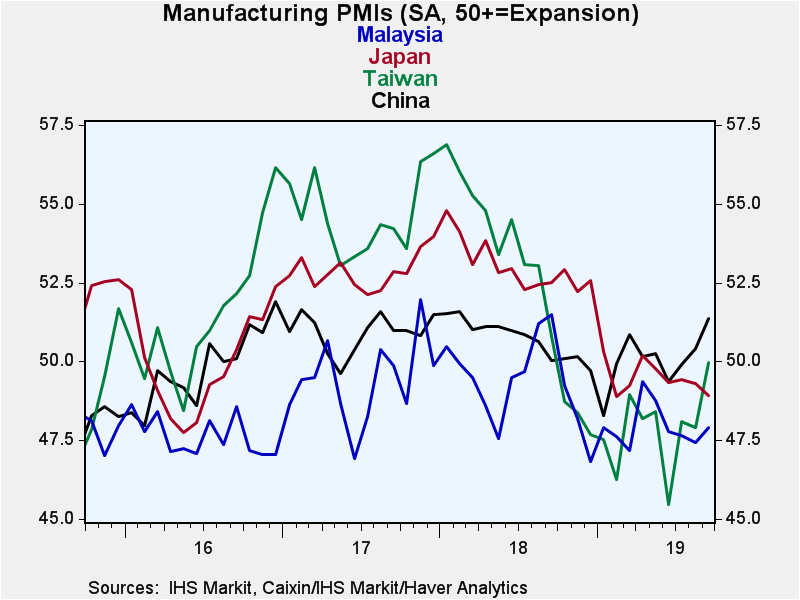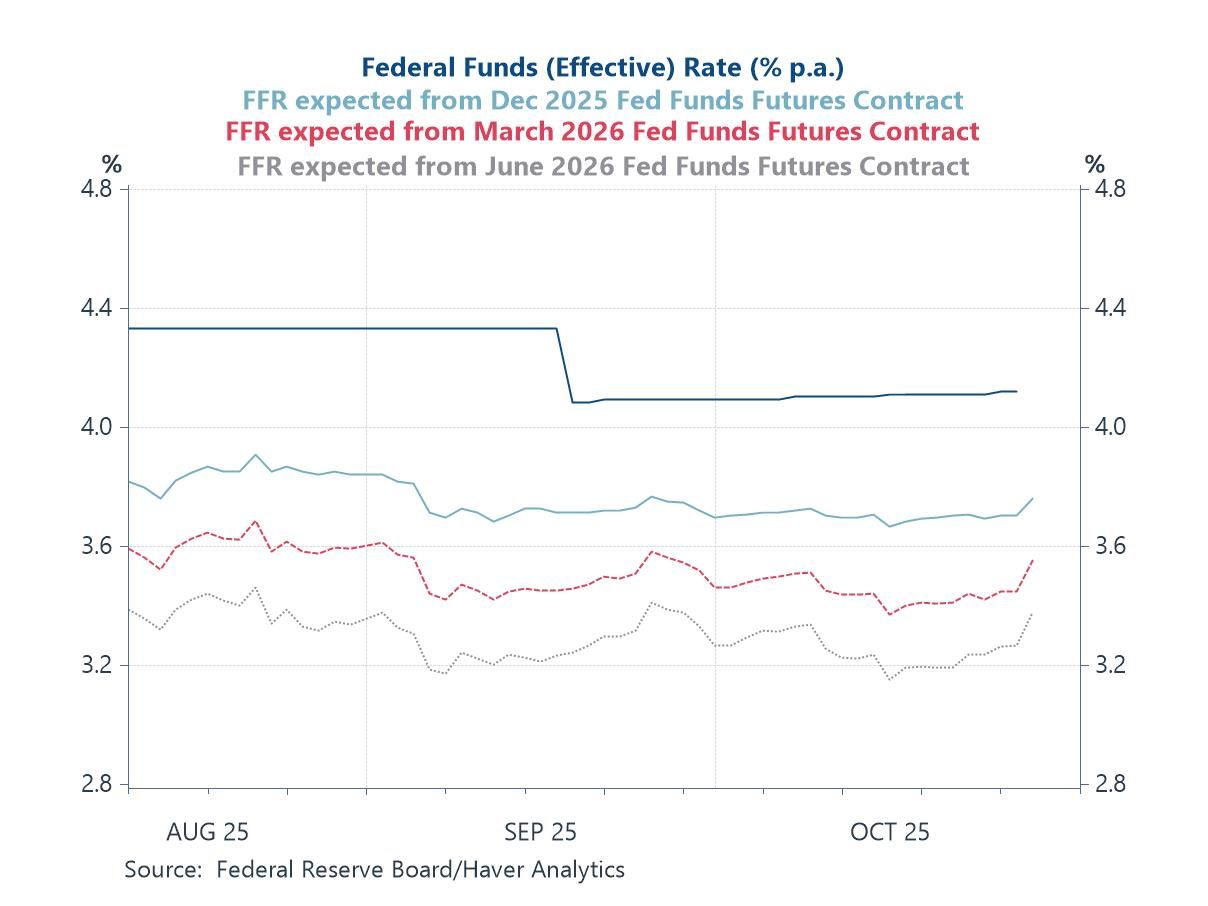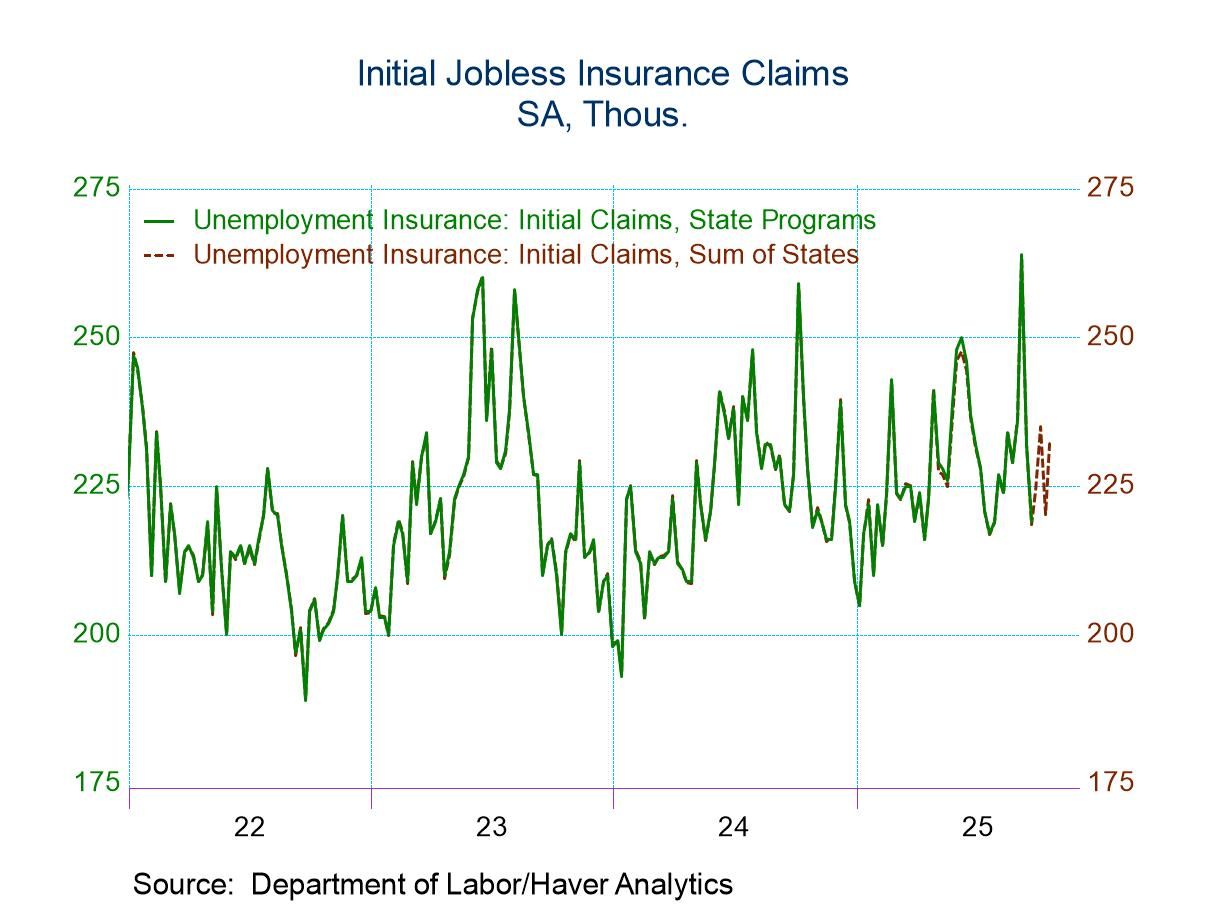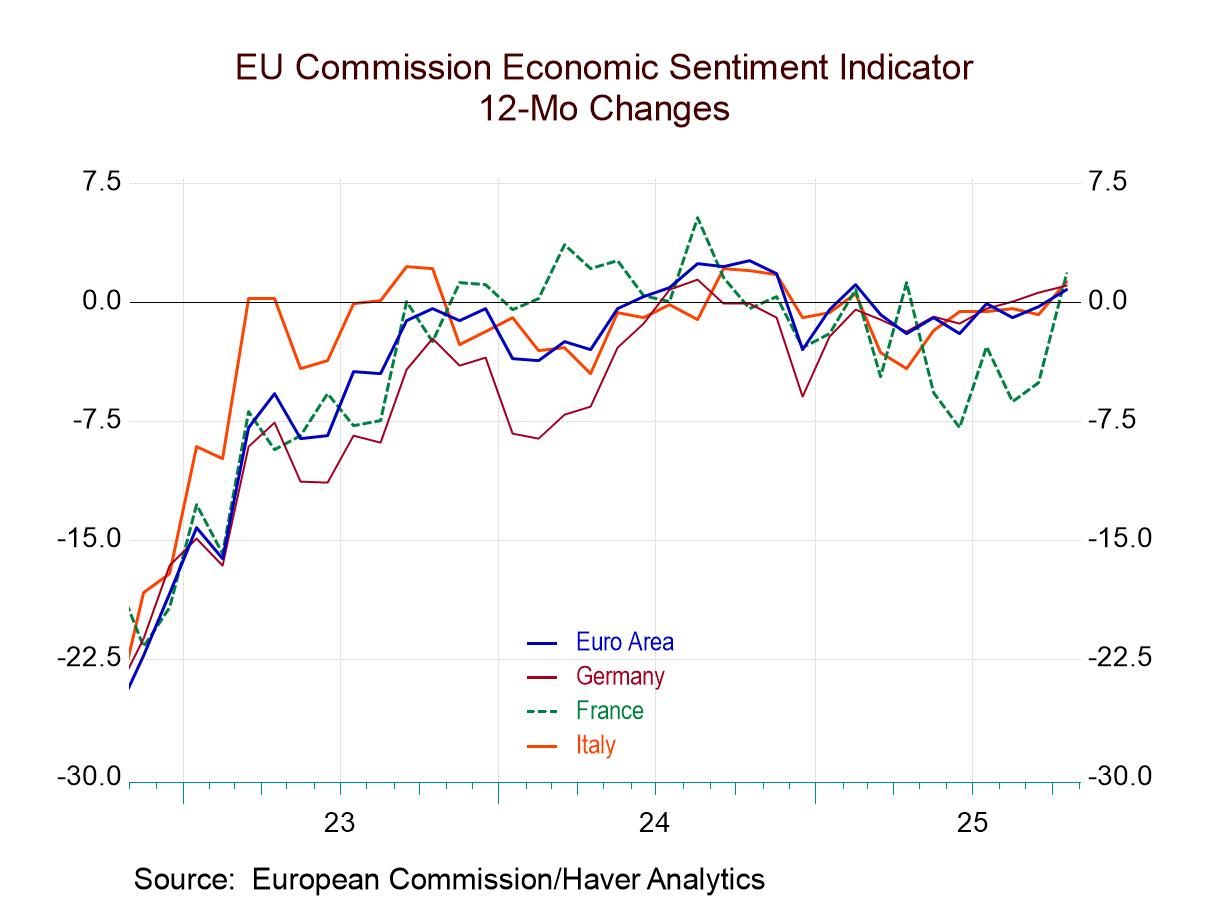 Global| Oct 01 2019
Global| Oct 01 2019More Than Half the Manufacturing PMIs Are Below 50; Momentum Is Fading and PMI Levels Are Getting Low
Summary
Taking a full count of the countries and regions in the top panel of the table, ten of 17 have PMIs below 50 in September. There are two countries Turkey and Taiwan with readings right at 50 (note: Taiwan is below 50 but rounds up to [...]
 Taking a full count of the countries and regions in the top panel of the table, ten of 17 have PMIs below 50 in September. There are two countries Turkey and Taiwan with readings right at 50 (note: Taiwan is below 50 but rounds up to 50; it is counted based on its raw score not its rounded score). In addition, France has a reading at 50.1. In short, there is a preponderance of weakness pitted against no strength. Brazil's 53.4 reading is the strongest raw score in September. Including Mexico (that has not yet reported in September), 13 of 18 countries are below 50 in August and 14 of 18 are below 50 in July.
Taking a full count of the countries and regions in the top panel of the table, ten of 17 have PMIs below 50 in September. There are two countries Turkey and Taiwan with readings right at 50 (note: Taiwan is below 50 but rounds up to 50; it is counted based on its raw score not its rounded score). In addition, France has a reading at 50.1. In short, there is a preponderance of weakness pitted against no strength. Brazil's 53.4 reading is the strongest raw score in September. Including Mexico (that has not yet reported in September), 13 of 18 countries are below 50 in August and 14 of 18 are below 50 in July.
Average PMI readings below 50 number 12 of 18 over three months, 10 of 18 over six months and 6 of 18 over 12 months. The period averages show a clear side to a greater proportion of manufacturing sectors, showing manufacturing declines (readings below 50).
Brexit countries (see bottom of the table) have the consistently strongest PMI readings (unweighted average). Those averages stand above 50 but have been steadily eroding. The G7 plus EMU country averages sink below 50 over six months and three months. And there is steady weakness in the group. For other Asia (VISkT: Vietnam, Indonesia, South Korea, and Taiwan), there is minor erosion and a skimming below the 50 level. All of Asia shows much the same reading and patterns as other Asia.
At the moment, a preponderance of readings is below 50 and there is a clear ongoing loss of momentum. Today WTO issued a warning about growth and world trade as it cut its estimate of the expansion for world trade volume. It has cut this estimate by more than half, to 1.2%, down sharply from its April projection of 2.6%. World trade volumes usually grow at a much faster pace than world GDP. Something to keep in mind with volume growth estimated at barely above 1%.
The queue standings of rankings of the current PMI readings are extremely weak- and exceptions are not examples of strength. These are calculated on a timeline from January 2015. Registering their lowest readings of this period are (1) the euro area, (2) Germany, (3) the U.S. (using the ISM), and (4) Russia. Single digit standings occur in (A) the U.K., (B) Japan, and (C) Vietnam. Only China, Brazil and Turkey have standings above their respective 50% mark that denotes their respective medians. Even so, these high rankings are only compared to the period and do not represent truly strong readings. China's raw diffusion reading is just 51.4. Better than that, Brazil's reading is more solid, at 53.4. But Turkey's 63rd percentile standing is for a raw diffusion reading of 50.0! That's a testament to how weak things have been (and still are) in Turkey, not to its ‘strength.'
The U.S. ISM manufacturing saw seven of ten components (including the headline) fade month-to-month. Import orders and prices moved up month-to-month, while new orders improved by a wafer thin single tick. Only supplier deliveries has an above 50 value. On a longer timeline, the U.S. report remains very weak with the headline having a queue standing on data back to January 1994 in its 11.7 percentile (that comparison encompasses a recession period or two and a slowdown). The highest percentile standing is for inventories- which is not good. This suggests that inventories have gotten farther out of alignment with the rest of the report and likely will lead to further weakness and output cutbacks.
On balance, trade weakness is spreading its disease globally. U.S. President Donald Trump is trying to blame the Fed because the dollar is rising so he is ignoring his trade war and blaming the rising dollar for U.S. trade dislocations. Clearly, the Trade War is the problem since the global economy is slowing not just the U.S.! And the PMI reports show weakness everywhere, even given that there were a few PMI improvements in Asia. The outlook has to remain very guarded and negative in view of the new facts on the ground and the new warning from the WTO. The environment for Mr. Trump and Mr. Xi is becoming hotter and less comfortable and it is more than just global warning at work. And that assessment is just based on economics, not on the political pressures that each will be feeling.
Robert Brusca
AuthorMore in Author Profile »Robert A. Brusca is Chief Economist of Fact and Opinion Economics, a consulting firm he founded in Manhattan. He has been an economist on Wall Street for over 25 years. He has visited central banking and large institutional clients in over 30 countries in his career as an economist. Mr. Brusca was a Divisional Research Chief at the Federal Reserve Bank of NY (Chief of the International Financial markets Division), a Fed Watcher at Irving Trust and Chief Economist at Nikko Securities International. He is widely quoted and appears in various media. Mr. Brusca holds an MA and Ph.D. in economics from Michigan State University and a BA in Economics from the University of Michigan. His research pursues his strong interests in non aligned policy economics as well as international economics. FAO Economics’ research targets investors to assist them in making better investment decisions in stocks, bonds and in a variety of international assets. The company does not manage money and has no conflicts in giving economic advice.






